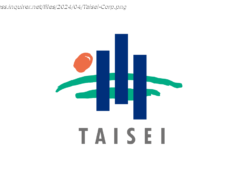From Tokyo to Houston something strange is happening; wages are failing to grow in line with very strong employment…
By James Saft
May 22 (Reuters) – From Tokyo to Houston something strange is happening; wages are failing to grow in line with very strong employment data.
The underlying causes are unclear, and no doubt vary between the two countries, but the implication is the same: lack of robust wage growth makes it difficult to get a self-sustaining and strong recovery, and hard to return to more normal monetary policy.
In Japan the divergence between labor market strength and minimal or negative wage growth is particularly jarring.
“The Japanese labour market is unambiguously as tight as it ever has been in history. Yet wage inflation remains moribund, ” Albert Edwards, global strategist at Societe Generale in London, wrote in a note to clients.
“It is not that Japanese companies haven´t got the cash to splash around if they so chose. Japanese corporate profits have boomed since (Prime Minister Shinzo) Abe came to power at the end of 2012.”
Abe brought in Abenomics, a suite of ‘three arrows’ of aggressive policy efforts: massive deficit spending, massive central bank asset purchases, and labor market and other structural reforms.
Real wages fell in March in Japan at the fastest clip in two years, with inflation-adjusted wages down 0.8 percent compared to the year before. Nominal wages fell 0.4 percent, a combined performance so dire it drove the yen weaker in early May after the data came out, as investors bet Bank of Japan monetary policy might take a more accommodative path than expected.
The failure of wages to keep pace with prices contrasts with the job market, where there are now more than two openings for every applicant in metropolitan Tokyo and the national jobs-to-applicants ratio is at 1.45, a 26-year high. The 2.8 percent unemployment rate is also at a multi-decade low.
Part of the lack of wage pressure may be due to the success of aspects of the third ‘arrow’ of Abenomics: structural, and particularly labor market, reform. Part of the point of Abenomics was to attract new supply into the labor market, in part to help the economy outgrow its massive debts. Female labor market participation has risen by almost a percentage point, to 49 percent, part-time work is up and the number of foreign workers in Japan passed 1 million for the first time.
Japanese companies may also, after decades of urging by Western fund managers, have taken a more shareholder-value-maximizing attitude and be declining to convert higher profits into higher wages.
MONOPSONY?
In the U. S., matters are less stark but the contrast is still vivid between the 4.4 percent unemployment rate – nearly a 10-year low – and year-on-year hourly earnings gains of 2.5 percent in April. Consumer prices are up an unadjusted 2.2 percent over the past year.
One argument is that the U. S. unemployment rate hides many who would like to work but have fallen out of the workforce during and after the great recession. These workers are slowly drawn back in, this line of reasoning goes, as the situation improves, capping potential wage gains.
There are puzzling facts, however. In the Dallas-Fort Worth area the unemployment rate of 4.3 percent is not far off the 4 percent economists generally consider to be full employment, yet total compensation grew just 2.2 percent in the year to March, exactly the rate of inflation.
Commenting on a New York Times story (https: //www.nytimes.com/2017/05/21/us/politics/utah-economy-jobs.html) detailing some of the difficulties faced by employers in Utah, where the unemployment rate is 3.1 percent, former Federal Reserve Bank of Minneapolis President Narayana Kocherlakota pointed out the disparity between this and wage growth he called “not exactly explosive.”
“Are employers bidding aggressively against each other for workers? That’s what they’d do in a *competitive* labor mkt. Low wage growth suggests that competition isn’t happening, ” Kocherlakota said on Twitter.
“Sounds to me that what’s likely holding back growth in (Utah) and maybe (the nation) is monopsony power in labor markets.”
Monopsony being a situation with one buyer and many sellers, the implication may be an economy in which businesses are insufficiently competitive with one another, perhaps for both labor and customers.
That´s quite a charge, but there are several broad sets of facts which provide support. Firstly, corporate profits have been at historically high levels for several years, and yet investment in new capacity has remained subdued. That this happens at a time in which interest rates are exceptionally low and owners of capital eager to lend adds credence to the idea that corporate managers are veering more towards protecting margins than expanding their base. Perhaps because they don´t face threats, or are protected from them by regulation.
Until the answer is found, wages in Japan and the U. S. and growth will remain tepid, and central bank balance sheets large. (Editing by James Dalgleish) )






